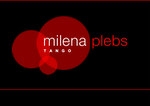
Control de calidad.
El éxito del baile del tango en el mundo aumenta día a día. Mucha gente que lo baila ve en dar clases una buena posibilidad de ganarse la vida. El problema es que muchas veces no están capacitados apropiadamente para hacerlo. Y los alumnos principiantes no siempre pueden darse cuenta cuan idóneos son los maestros que eligen.
see english translation below
Al ser el tango un baile popular, no hay una forma de ejercer un control de calidad de las aptitudes pedagógicas de los docentes. En los instructorados académicos, sean de arte o cualquier otra categoría, la aprobación de competencia se realiza a través de exámenes, expidiendo certificados u otorgando calificaciones. ¿Cómo determinar en el tango si lo que una persona transmite es valioso y está correctamente transmitido? Se ha sabido de varios proyectos que tienen como objetivo la sistematización de la transmisión del baile para, entre otras cosas, regular la calidad de los instructores.Personalmente, no estoy de acuerdo con un código unificado de formación. No creo conveniente una única reglamentación de los pasos y secuencias. Pienso que así se mata la creatividad. Si todos hiciéramos de la misma manera la salida, el ocho, etcétera, en pos de defender a los consumidores, el baile se volvería monótono y aburrido. Lo que sí podemos reconocer, en la gran cantidad de gente que lo ha bailado desde sus comienzos, son tendencias o estilos. Desde el primitivo tango canyengue, pasando por todas las variantes conocidas, como: tango de salón, con figuras, fantasía, los últimamente de moda: milonguero, villa urquiza, y tango nuevo, entre otros. Una alternativa para poner en funcionamiento algún tipo de habilitación para enseñar, podría ser crear un ente regulador con representantes de cada una de las tendencias, y que cada área pudiera contemplar la calidad de su estilo correspondiente. Asimismo, que todas estén interrelacionadas, y se consulten de manera dinámica y flexible, ya que las fronteras entre un estilo y otro pueden ser difusas. Dada la vastedad del campo del baile del tango a nivel global el desafío sería crear una estructura eficiente y sólida que funcionara internacionalmente. Si mejorar la calidad de los profesores fuera una inquietud común entre los que tenemos roles de responsabilidad en el género, sería bueno que nos juntemos para discutir y proponer formas de preservar el buen nivel de esta expresión que tanto queremos y que nos da tantas satisfacciones. •
Copyright © El Tangauta 2008
Quality control.
The success of the dancing of tango in the world increases day by day. Many people who dance see teaching as a good way of making a living. The problem is that many times they are not qualified to do it. And beginner students not always can tell how suitable are the teachers they choose.
Since tango is a popular dance, there is not way of exercising quality control of the pedagogical aptitudes of the teachers. In the academic environment for the arts or any another category, competence is determined through exams and the issuance of certificates or ratings. How does one determine in tango if what a person communicates is valuable and is correctly transmitted? There are several projects that aim to the systematization of the communication of the dance in order to, among others things, regulate the quality of the instructors. Personally, I don’t agree with having a unified code of teaching. I do not believe it is appropriate to have only one set of regulations of steps and sequences. I think that this would kill creativity. If we all did the salida, the ochos, etc, in the same way with the purpose of defending the consumers, the dance would turn monotonous and boring. What we can recognize, in the great many people who have danced tango since its beginnings, are their tendencies or styles. From the primitive tango canyengue, through all the known varieties: tango salón, with sequences and fantasy, and those which have become fashionable recently: milonguero, villa urquiza, and tango nuevo, among others. An alternative to implement some type of teaching certification, could be to create a regulating entity with representatives of each one of the tendencies, and that each area dealt with the quality of its corresponding style. At the same time all would be interconnected, and they would consult with each other in a dynamic and flexible way, since the boundaries between the different styles may intersect. Given the immensity of the field of the dance of tango at a global level the challenge would be to create a solid and efficient structure that functioned internationally. If improving the quality of the teachers were a common concern among those of us who have roles of responsibility in the genre, it would be good to get together to discuss and propose ways to preserve the quality level of this expression that we love so much and that gives us so many satisfactions.
Copyright © El Tangauta 2008
Publicado en El Tangauta - EDICION nro 168
Traducción: Dolores Longo.






No hay comentarios:
Publicar un comentario